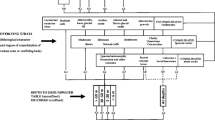Abstract
The protection of groundwater has become one of the most important European environmental policies as evidenced by the Orders relating to the protection of water from contamination, Directive 2000/60/CE of the European Parliament and the European Union Council, and more concretely Directive 2006/118/118/CE, related to the protection of groundwater from pollution and degradation. Traditional methods for assessing vulnerability include soil surveys, drilling and analysis of lithology logs from wells with the objective of characterising the thickness, hydraulic properties and lateral extend of the protective layers. However, such studies can be labour-intensive and expensive. In addition, the parameters measured may have high spatial variability, which makes accurate characterization over large areas difficult. Fortunately, a numerical index of protection can be assigned from the longitudinal electrical conductance parameter derived from electrical resistivity surveys (VES, ERT or any other electrical or EM method). This can be more accurate and reliable than any other vulnerability index derived only from visual inspection or interpolated from sparse borehole data.





Similar content being viewed by others
References
Aller L, Bennet T, Lehr JH, Petty RJ, Hackett G (1987) DRASTIC: a standardized system for evaluating ground water pollution potential using hydrogeologic settings. US EPA, 600/2-87–035
Anderson LJ, Gosk E (1989) Applicability of vulnerability maps. Environ Geol Water Sci 13:39–43
Casas A, Himi M, Díaz Y, Pinto V, Font X, Tapias JC (2008) Assessing aquifer vulnerability to pollutants by electrical resistivity tomography (ERT) at a nitrate vulnerable. Environ Geol 54:515–520
Dahlin T (1996) 2D Resistivity surveying for environmental and engineering applications. First Break 14:275–284
Foster SSD (1987) Fundamental concepts in aquifer vulnerability, pollution risk and protection strategy: In: van Duijvenbooden W, van Waegeningh HG (eds) TNO Committee on Hydrological Research, The Hague, Vulnerability of soil and groundwater to pollutants, Proc Inf, vol 38, pp 69–86
Henriet JP (1975) Direct applications of the Dar Zarrouk parameters in ground water surveys. Geophys Prospect 24:344–353
Hölting B, Haertlé Th, Hohberger KH, Nachtigall K, Villinger E, Weinzierl W, Wrobel JP (1995) Konzept zur Ermittlung der Schutzfunktion der Grundwasserüberdeckung. –Geologisches Jahrbuch, vol C 63, pp 5–24
Kalinski RJ, Kelly WE, Bogardi I, Pesti G (1993) Electrical resistivity measurements to estimate travel times through unsaturated ground water protective layers. J Appl Geophys 30:161–173
Kirsch R (2006) Groundwater Geophysics. Springer, Heidelberg
Kirsch R, Sengpiel KP, Voss W (2003) The use of electrical conductivity mapping in the definition of an aquifer vulnerability index. Near Surf Geophys 1(1):13–19
Loke MH (2002) RES2DINV ver. 3.50. Rapid 2-D resistivity and IP inversion using the least square method. Geotomo Software. Penang, Malaysia
Loke MH, Barker RD (1996) Rapid least-squares inversion of apparent resistivity pseudosections by a quasi-Newton method. Geophys Prospect 44:131–152
Maillet R (1947) The fundamental equations of electric prospecting. Geophysics 12:529–556
Rupert MG (2001) Calibration of the DRASTIC ground water vulnerability mapping method. Ground Water 39(4):625–630
Van Stempvoort D, Ewert L, Wassenaar L (1993) Aquifer vulnerability index. A GIS-compatible method for groundwater vulnerability mapping. Can Water Resour J 18(1):25–37
Acknowledgments
This work was partially supported by the Spanish Ministry for Science and Innovation through the research project “Relationships between hydrogeological and geophysical parameters for assessing aquifer vulnerability” (CGL2009-07025) and the project “Waste water treatment and reuse for a sustainable management, TRAGUA” (CSD2006-00044) in the framework of the Consolider programme.
Author information
Authors and Affiliations
Corresponding author
Rights and permissions
About this article
Cite this article
Sendròs, A., Diaz, Y., Himi, M. et al. An evaluation of aquifer vulnerability in two nitrate sensitive areas of Catalonia (NE Spain) based on electrical resistivity methods. Environ Earth Sci 71, 77–84 (2014). https://doi.org/10.1007/s12665-013-2696-1
Received:
Accepted:
Published:
Issue Date:
DOI: https://doi.org/10.1007/s12665-013-2696-1




